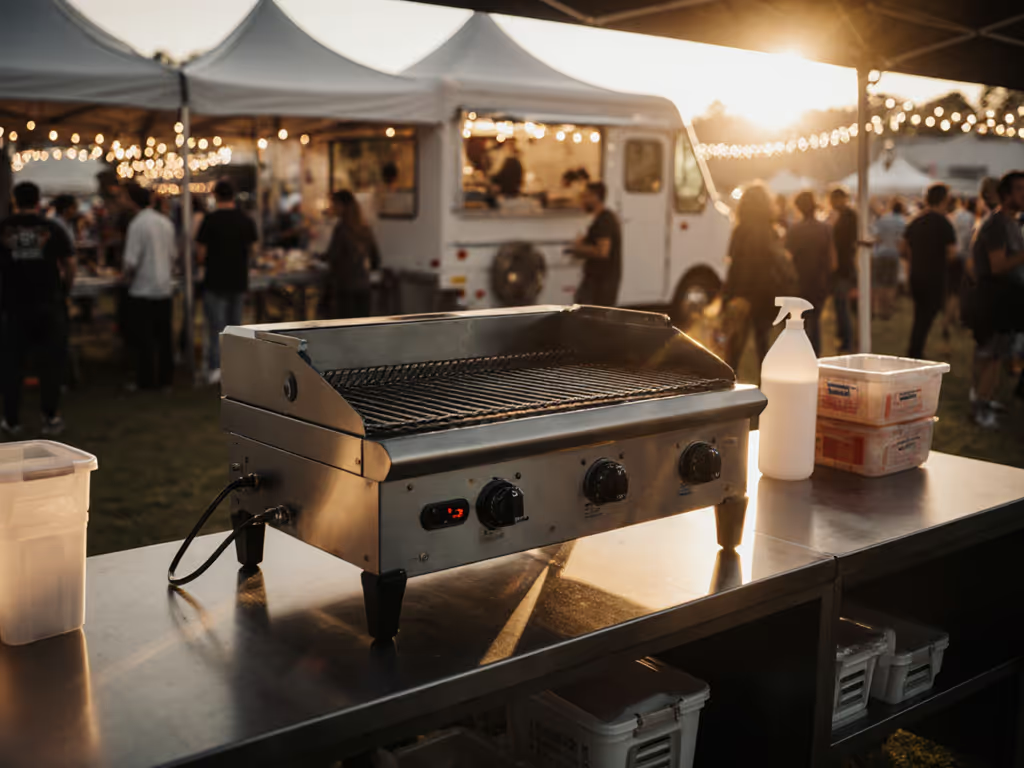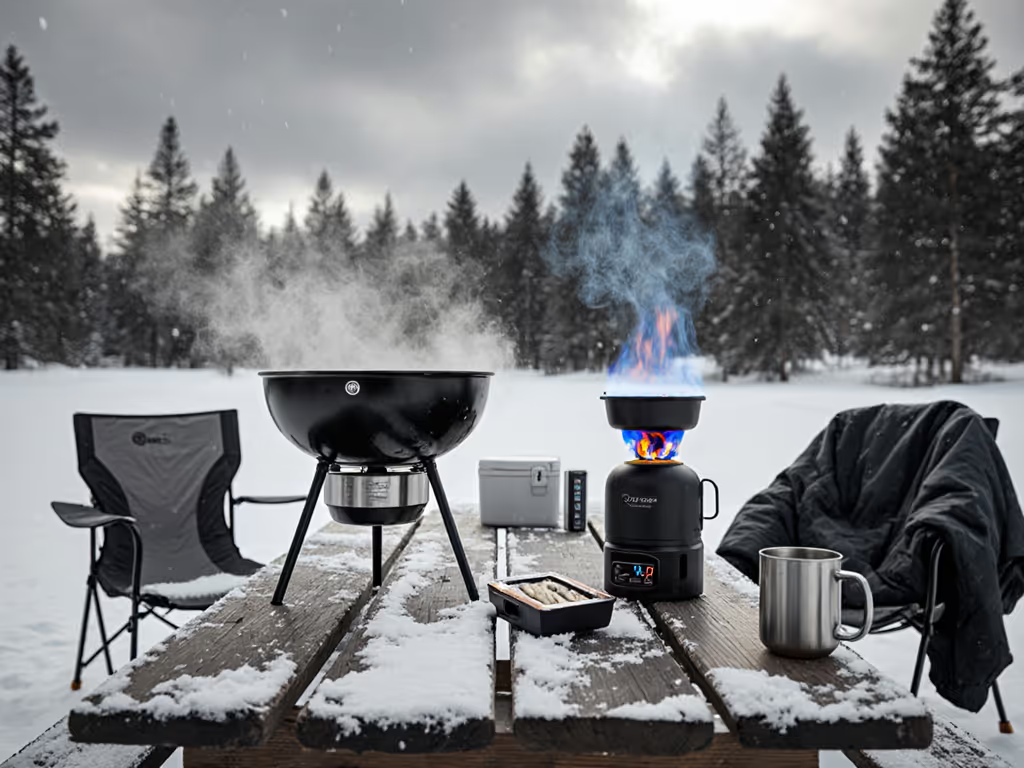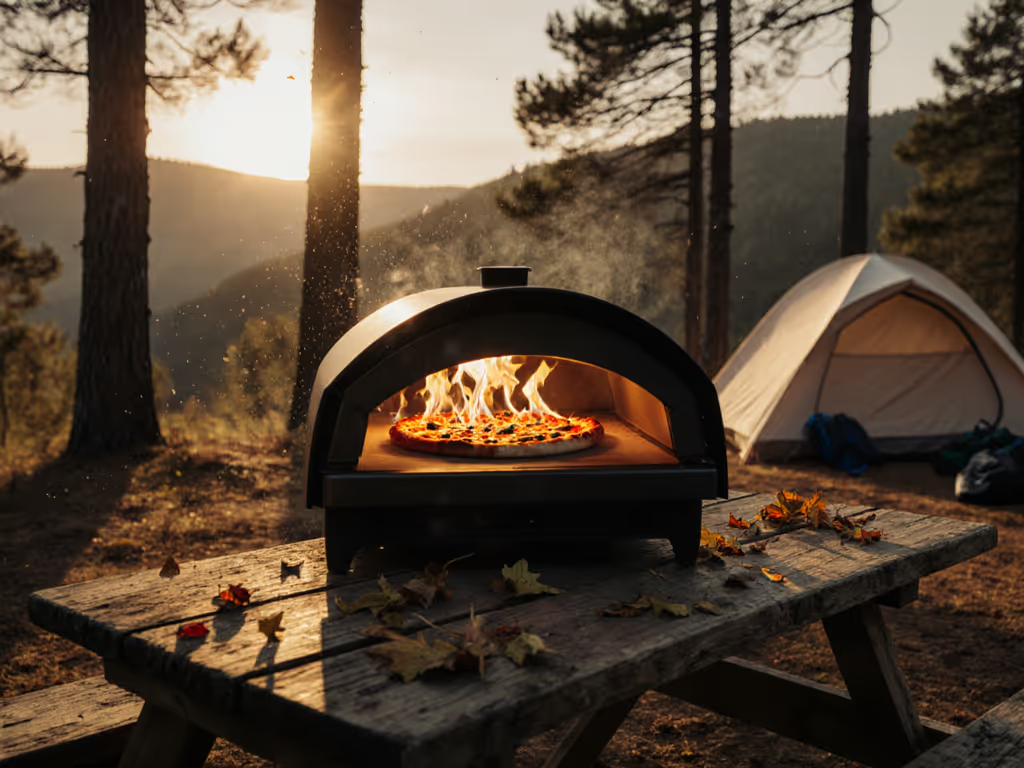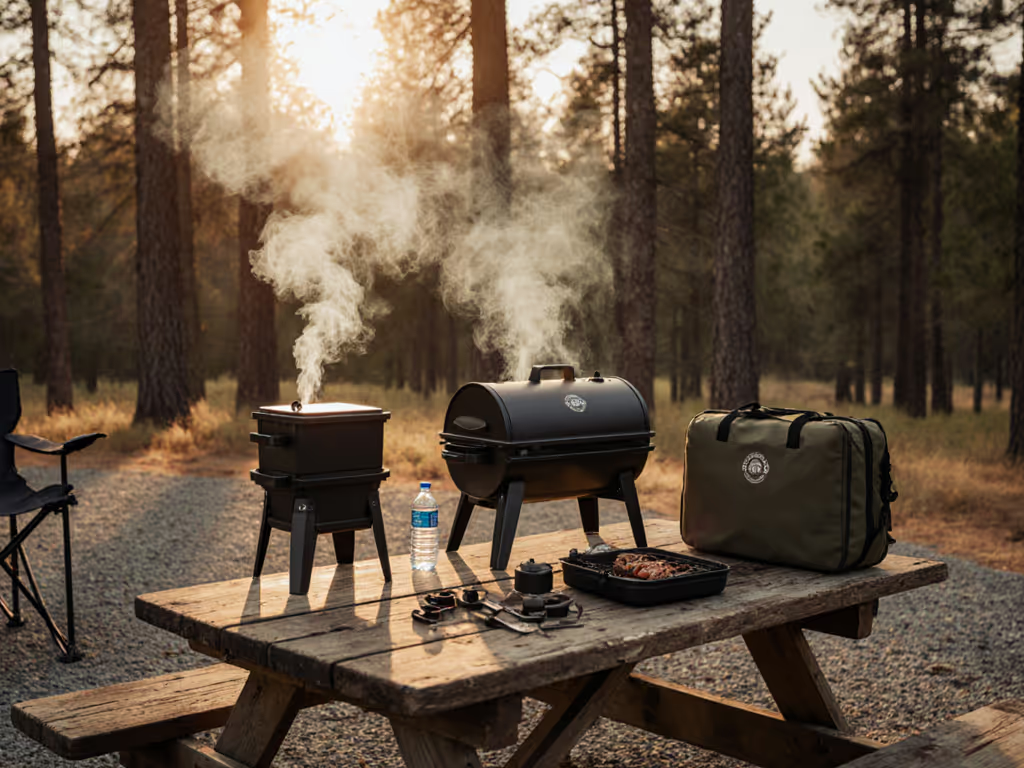
Power-Generating Grills vs Camp Stoves: Which Charges Faster?
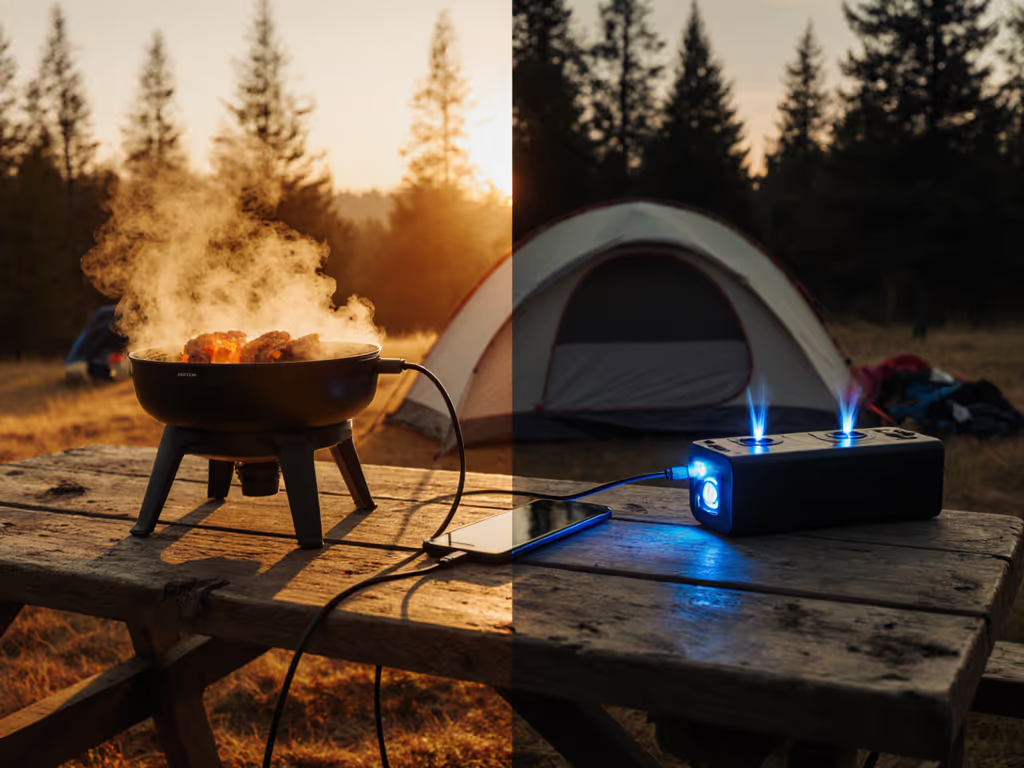
For outdoor enthusiasts needing off-grid cooking power and device charging, choosing between power generating grill systems and traditional camp stove setups involves critical tradeoffs. This analysis compares thermal to electric conversion efficiency, real world charging speeds, and cooking utility across both solutions. If you're new to the landscape, see our portable grill types guide for pros, cons, and best use cases.
Charging Mechanism Breakdown
Thermoelectric Generators (Camp Stoves)
Devices like the BioLite CampStove 2+ use a thermoelectric generator (TEG) sandwiched between the fire chamber and cook surface. Heat differentials create electricity via the Seebeck effect:
- Process: Fire -> TEG -> Electricity -> Fan/USB output
- Internal fan boosts combustion while surplus power charges a 3,200 mAh battery
- Delivers 2 to 3 W continuous output during operation
Grill-Based Power Systems
Dedicated grills that charge devices are exceptionally rare in current markets. Most solutions involve:
- Attaching external thermoelectric modules to grill surfaces
- Using standalone power stations charged via grills' waste heat
- Integrating DC generators with propane grill burners
Charging Speed Comparison
| Metric | Power-Generating Camp Stove | Grill + External Charger |
|---|---|---|
| Phone Charge (0 to 100%) | 4 to 6 hours (while cooking) | 2 to 4 hours (pre-charged power bank) |
| Power Density | 3 W continuous | 5 to 20 W (external battery) |
| On-Demand Power | Requires active fire | Pre-charged dependency |
| Multi-Device Support | Single USB port | Multiple ports |
Camp stoves generate electricity during operation, while grill solutions typically depend on pre-charged external batteries. The BioLite CampStove 2+ completes a full phone charge in 4 to 6 hours of continuous woodburning. Grill-based setups show faster charging only when paired with high capacity pre-charged power banks.
Cooking Efficiency Tradeoffs
Camp Stove Advantages
- Hyper-efficient combustion via forced-air fan
- Multi-fuel flexibility: Uses twigs, pellets, or biomass
- Integrated cookware: Supports griddles/kettles on a scalloped stand For getting more out of compact setups, try our efficient small-batch cooking tips.
Grill Limitations
- No native power-gen: Requires add-ons that reduce portability
- Fuel constraints: Most need propane or charcoal
- Single-function: Lack boiling and sauteing versatility
Real-World Use Case Analysis
Scenario 1: Backpacking
- Winner: Camp Stove Wood-burning models like BioLite eliminate fuel weight while providing emergency charging. At 2 lbs, they outperform grill + power bank combos (avg. 5+ lbs).
Scenario 2: Car Camping
- Winner: Grill + External Battery Propane grills offer faster cooking for groups, while pre-charged 20,000 mAh power banks provide quicker device charging without fire maintenance. Not sure which compact propane setup suits you? Start with our Flat Iron vs Weber Q1000 comparison.
Scenario 3: Emergency Preparedness
- Winner: Camp Stove BioLite's ability to generate power from backyard biomass proves superior during extended outages where fuel resupply is impossible.
Technical Limitations
- Thermal Constraints: TEG efficiency drops below 12% without at least a 300 F heat differential
- Weather Vulnerability: Wind reduces grill or stove heat retention, lowering charging rates To stabilize temps in gusts, follow our windproof heat control guide.
- Scalability Issues: Neither solution efficiently powers laptops or CPAP devices
The Verdict: Context Dictates Superiority
For integrated off-grid cooking power, power generating grill systems remain impractical. The best camp stove solution (BioLite) charges while cooking but slowly. For rapid charging, pair a traditional portable electric griddle with a pre-charged high wattage power bank.
{{GENERIC_IMAGE(charging_speed_comparison_graphic)}}
From pack to plate in minutes: Prioritize workflows where your fuel source matches both cooking and charging needs. For most mobile scenarios, the camp stove's dual functionality outweighs its slower charge rate.
Action Step: When selecting systems, calculate your simultaneous cooking/charging requirements:
- For 1-2 person trips with USB devices -> BioLite CampStove 2+
- For 4+ groups needing faster charging -> Propane grill + 20,000 mAh power bank
- Fire-ban areas -> Butane stove + solar charger

